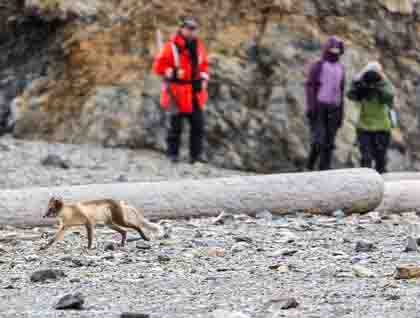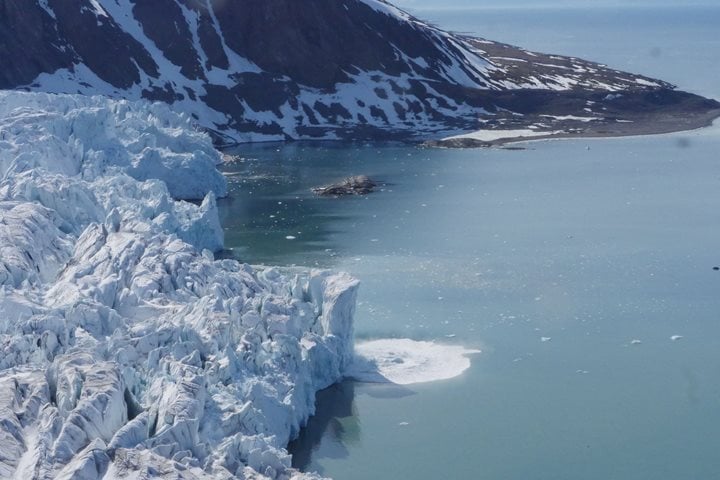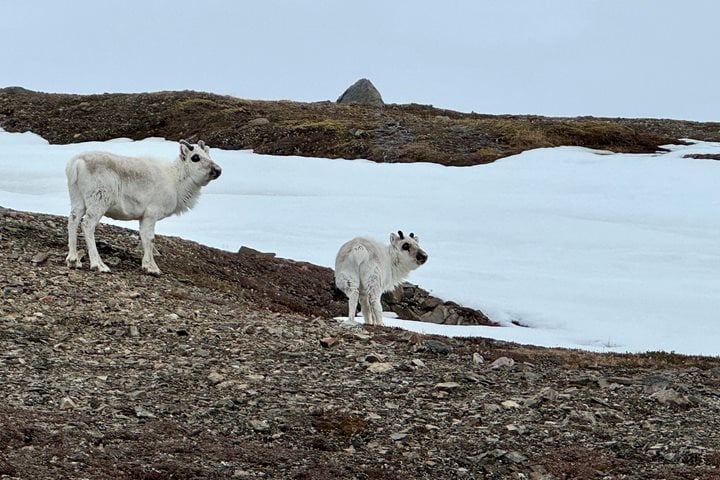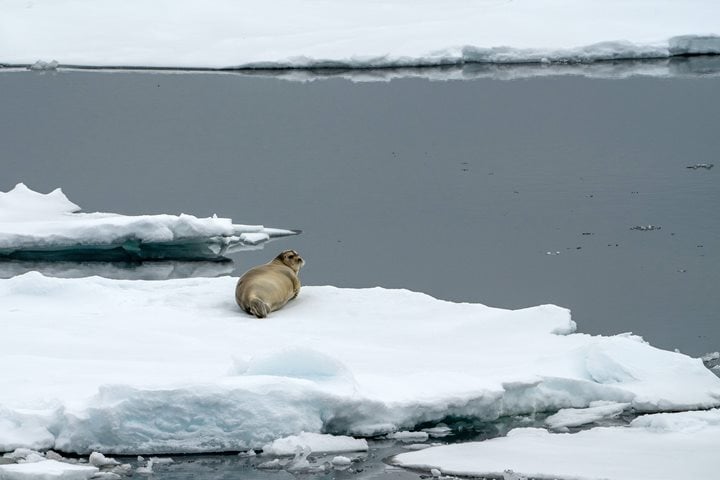After an evening run in thick fog around the southern end of Spitsbergen Island, the National Geographic Explorer entered into Belsund (Bell Sound). Belsund is one of the larger fjord systems deeply indenting the southern end of Spitsbergen, and offers many places to look for and offer possible shore excursions. After much deliberation, expedition leader Bud Lehnhausen decided to try a landing at Gösbergkilen, and what a wonderful choice that turned out to be!
Upon landing our eyes were drawn to all the shades of lavender flowers on the tundra as purple mountain saxifrage and flowering moss campion blanketed the ground in front of us. We weren’t the only mammals drawn to this hue, as Svalbard reindeer contentedly munched purple flowers while foraging on other small plants as well. Much to our amazement these smallest of all reindeer sub-species are as curious about us as we are about them. Time and again a group of young reindeer would approach, literally trotting right up to our small groups, pose for photographers, then trot away, only to return a few minutes later. Cameras clicked and whirred as gigabyte after gigabyte of reindeer images recorded the encounters!
The highlight of the morning had to be an Arctic fox caught between the remainder of its winter coat and its new summertime coloration. With white ear tuffs and white still dominating its tail, this otherwise brown fox scampered from group to group along the snow and tundra, only to finally make its way to the beach and then on to our landing. All ashore were excited at this, the first Arctic fox sighting of the season!
During the afternoon we turned our attention from the land mammals to the big, blubbery kind as we cruised offshore to look for whales and dolphins. Our intuitions led to sightings of several whales, including feeding humpback and fin whales. While Norway was the first nation to officially protect whales in the year 1904, it has been a long and slow comeback for the larger species along the coast of Svalbard. Several more blows were sighted further out to sea, hinting at the possibility of perhaps even the largest animal on the planet, the mighty blue whale.
From the smallest land mammal in Svalbard, the Arctic fox, to the largest animal to ever live on the planet, the blue whale today was a study in the diversity of wildlife here in the high Arctic.






.jpg?width=106&height=85&mode=crop&scale=both&quality=50)


